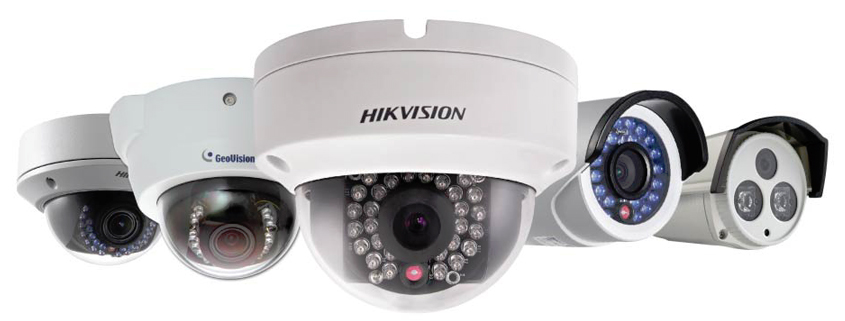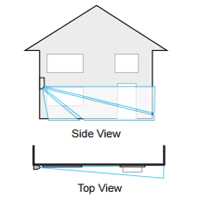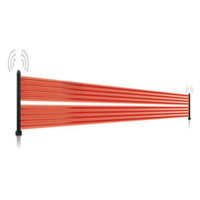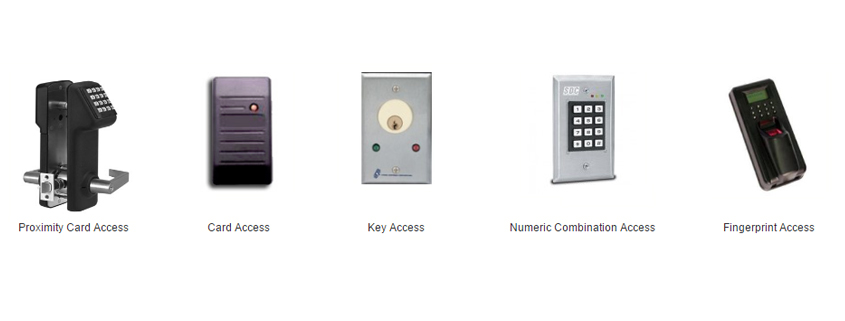CCTV & Access Control Systems
Hikvision CCTV
SEM Electrical are a certified security associate of Hikvision CCTV equipment. Hikvision has been the world’s leading video surveillance products supplier for the past 5 years. Hikvision provides video surveillance products and vertical market solutions in the global market, through more than 2,400 partners in 155 countries and regions. Featuring the industry’s strongest R&D workforce, Hikvision uses its state-of-the-art manufacturing facilities to design and develop innovative CCTV and video surveillance products.
The company’s complete product suite includes Smart IP cameras, HD analog cameras, speed domes, NVRs, DVRs, video management software, access control and alarm systems, encoders, decoders, and other elements of sophisticated security systems. Hikvision products serve a diverse set of vertical markets that includes retail, banking and finance, transportation, education, commercial, government, and residential applications.
Intruder Beams
As well as CCTV SEM Electrical can install intruder beams to create a secure ring around your property. We can link the beams to lights, alarms, voice boxes and CCTV. This gives you a number of options for your business. welcome new customers to your waiting area with a message saying someone will be with them shortly. Alternatively make intruders aware that they have been detected with security lights and alarm or recorded message.
There are a number of different beam options:
Curtain Beams: Using PIR and Microwave detection, this beam creates a 2 meter tall 12 meter long curtain beam. Both sensors must trigger to cause the detector to alarm ensuring precise and reliable presence detection. The detector has three N/C outputs for alarm, masking and tamper triggering.
Wired and wireless infrared beams: 20 – 100 meter infrared beam detector with 4 channel selectable beam frequency. They come in either dual or quad beams or increased accuracy. Wireless beams can be powered for 4 to 5 years on 4 saft batteries, data can also be wirelessly transmitted and received.
Access Control Systems
Access control systems provide authorized individuals safe and secure access in and out of various parts of your business while keeping unauthorized people out. They can range from electronic keypads that secure a single door to large networked systems for multiple buildings. Access Systems also greatly simplify management of your facility: no need to replace lost keys, hunt down old keys from terminated employees, or wonder who has access to which areas.
The most basic role of an access control system is to keep out anyone who is not supposed to enter an area. This can be the front door, a parking garage, a server room, a personnel records room, or any other sensitive area. You may also want to use an access control system to track when employees come and go.
SEM Electrical can offer a number of different access systems depending on your requirements;
- Stand-Alone Locks as the name implies are an “all-in-one” access control system for a single-door. The lock powered by replaceable internal batteries can be unlocked by keypad, proximity card or a combination. The advantages of stand-alone locks are they can be installed and operational in minutes. Some offer hand-held readers that extract the audit trail from the lock. The disadvantages of stand-alone locks are they are stand-alone and not part of a broader network.
- Proximity readers are the most popular option in commercial access control. They are easy to use, and when cards are lost, it is a simple matter to deactivate them and issue new ones. They can also be combined with photo IDs for additional security. Proximity cards, which can work from one inch to three feet from a sensor, are the most common. Because there is no contact between the card and reader, they are very reliable and suffer little wear and tear. They are also inexpensive. A specialized type of proximity card is the automobile tag, which allows access to a parking facility without requiring the driver to open their window or get out of the car. Automobile tags can work at hundreds of feet away from a sensor. Security access systems can use magnetic stripe or barcode cards, as well, and these can be a money‐saving option if you already use one of these technologies for employee ID cards.
- Keyswitches offer electronic auditing through a network while continuing to use a physical key to activate the lock.
- Keypads are common for single door security access and less expensive systems. They are easy to use but less secure, since users have a tendency to write down the entry code or to “lend” it to others. They also do not provide detailed audit trails until you provide unique codes to each individual.
- Biometric systems rely on physical characteristics of the users for identification such as fingerprints, handprints, or even retinal scans. They are by far the most secure methods of access control. However, they are also considerably more expensive and can seem invasive to employees forced to use them constantly. Early models proved less unreliable outdoors, so they were not recommended for exterior security access.
Door Access Control Egress Devices
To ensure free pass to exit a secure door, all locking systems include a quick exit device. Examples include; push-to-exit buttons, request-to exit bars, motion detectors, emergency (break-glass) exit and Time delayed exit. These buttons are mounted in the interior, on the casing surrounding the door (mullion mount) or on a wall near the door (gang mount).
- Push-To-Exit Buttons as the name implies Push-To-Exit buttons are wall mounted near the exit point and contain directions on a large green or red button. Depressing the button releases the door.
- Push Bars attach across the inside of the door at the height of the door latch. You exit the door by pressing against the bar. The action of pressing the bar releases the latch and the door opens.
- Emergency Exits attach on a wall near the exit point. Emergency exits are available is two general types, the first is a ‘break-glass’ model. To gain exit, you break the glass face. The action depresses a button inside the switch and releases the door. The second type uses a pull down handle to release the door.
- Motion Sensors function by detecting a vehicle or person approaching an exit and unlock the door. In addition to motion sensors, several other type of free exit systems are available including: loop detectors and photo cells or beams
- Delayed Egress function by starting a timer once the device is activated. Delayed egress can include voice commands and sounds explaining the door will open in ‘x’ seconds. For example, once depressed. a delayed egress can count down from 15 seconds to zero and then release the latch opening the door. Delayed egress devices provide the emergency opening functional of a free exit system while providing a delay for enhanced security.





